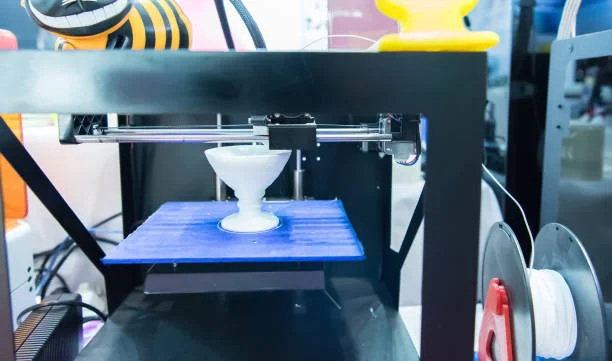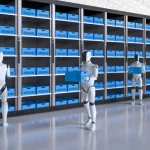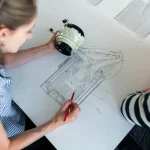Industries and brands are constantly seeking new ways to stand out from their competitors. The main goal of any exhibition display is to attract visitors, capture their interest, and leave a lasting impression. Many companies are now turning to innovative technology for solutions, as traditional methods are often limited by design, cost, and time restrictions. 3D printing is one such innovation transforming the exhibition industry. Not only does this technology allow displays to become more creative, but it also makes them more cost-effective, environmentally friendly, and efficient.
This blog explores how 3D printing is revolutionising exhibition displays, and why firms should consider adopting this cutting-edge approach to enrich their presence at exhibitions and expos.
Hungry for more knowledge? Feed your mind on related post!
3D Printing’s Ascent in the Exhibition Sector
3D printing has changed over the last ten years from being a specialised tool for prototyping to a widely used production technique. Originally employed in engineering and design, it has since spread to other sectors, including architecture, healthcare, fashion, and even entertainment. 3D printing is getting popular in the exhibition industry because it can produce sophisticated, bespoke, and one-of-a-kind designs that are impossible to accomplish with conventional fabrication techniques.
3D printing is an additive process as opposed to traditional manufacturing, which frequently uses subtractive techniques like cutting or moulding. Using materials like plastic, resin, or even metal, it constructs objects layer by layer. This approach preserves durability and aesthetic appeal while allowing exhibitors to freely experiment with striking patterns, shapes, and textures.
Personalisation and Creativity
Customisation is one of the most important ways that 3D printing is changing exhibition displays. The use of generic display stands and signage is no longer necessary for exhibitors. Alternatively, they can create custom displays that are suited to their message and company identity.
For example, a business in the automobile industry can use large-scale 3D-printed car models or accurately made components to display its products. In the same way, a fashion brand might create elaborate sculptures or mannequins to improve its narrative at an exhibition. Before 3D printing became widely available and reasonably priced, this degree of creative flexibility was practically unattainable.
Time and Money Savings
Temporary yet powerful displays are frequently needed for exhibitions. Particularly for unique works, traditional fabrication can be expensive and time-consuming. This issue is resolved by 3D printing, which offers quicker turnaround times and drastically lowers material waste.
There is no need for costly moulds, dies, or tooling because displays are made directly from digital models. This significantly lowers the cost of producing limited-edition exhibition items. Additionally, firms may prepare for exhibitions more effectively and stress-free because of the time saved in design and development.
Portable and Lightweight Designs
The capacity of 3D printing to create robust yet lightweight structures is an additional benefit for shows. Longer setup times and increased transportation costs result from the weight and difficulty of traditional display materials like metal, glass, and wood. In contrast, 3D printed displays may be designed to be both robust and lightweight, which makes handling and assembling them simpler.
For businesses that regularly participate in shows across many cities or nations, this flexibility is extremely advantageous.
Eco-Friendly Options for Contemporary Exhibitions
Sustainability is now required, not an option. Exhibitions are not an exception to the growing pressure on businesses in all sectors to implement eco-friendly procedures. In this field, 3D printing is essential for advancing sustainability.
Exhibitions can reduce their carbon impact by employing 3D printing to create displays with little waste and reusable materials. Additionally, businesses can lessen their reliance on single-use structures by designing displays for simple disassembly and reuse. In the long run, this lowers expenses while also helping the environment.
To guarantee that show displays meet contemporary sustainability goals, forward-thinking companies collaborate with suppliers such as CAD Deziners, which provide environmentally aware 3D printing services in Adelaide.
Pushing Design’s Boundaries
Visual impact is central to exhibitions, and the most compelling displays are those that look innovative and futuristic. 3D printing promotes the production of intricate geometries and organic shapes that are challenging or impossible to produce with traditional manufacturing methods.
Companies can try:
- Complex lattice configurations
- Personalised lighting enclosures
- Forms of sculpture
- Touch-friendly, interactive designs
By transforming the booth from a platform into an immersive atmosphere, such inventiveness can improve the visitor experience. This kind of innovation improves engagement and brand memorability, both of which are critical for generating leads at trade exhibitions.
Quicker Exhibition Prototyping
Businesses frequently need to test design concepts before deciding to invest in a full-scale exhibition display. Prototyping using conventional techniques can be expensive and time-consuming. Because 3D printing accelerates the prototyping process, companies can produce full-size mock-ups or scaled-down models to assess impact, functionality, and aesthetics.
This flexible strategy reduces the possibility of expensive errors while ensuring that the finished display is faultless and precisely matches branding objectives.
Including Technology in Displays for Exhibitions
Additionally, 3D printing improves other contemporary technologies that are frequently utilised in exhibitions. Custom 3D printed cases can hold interactive displays, VR sets, or screens. Lighting systems can be easily incorporated into printed buildings by businesses to produce striking visual effects.
Visitors will have a lasting impression of the brand because of this multisensory experience that combines digital involvement with physical inventiveness.
3D Printing’s Competitive Benefit for Exhibitors
Making an impression at fiercely contested trade exhibitions is important. Adopting 3D printing gives exhibitors a distinct edge by exhibiting innovation, sustainability, and creativity. This not only increases foot traffic but also conveys to prospective customers and partners that the company is progressive and tech-savvy.
Furthermore, 3D printing’s adaptability guarantees that companies of all sizes, from start-ups to well-established multinationals, can profit from it. While larger organisations can experiment with bold, large-scale designs, smaller businesses can create displays that are both attractive and reasonably priced.
Final Thoughts
Innovation is essential to the exhibition sector, and 3D printing is the finest technology that is revolutionising the way displays are created, viewed, and used. From sustainability and cost effectiveness to personalisation and innovation, 3D printing allows companies to present themselves in the most powerful manner.
The potential of 3D printed exhibition displays will only grow as technology advances, giving companies many chances to make an impression on attendees and stand out in the cutthroat world of trade exhibitions. By utilising cutting-edge technology for 3D Printed Exhibition Models & Displays In Australia, companies can use CAD Deziners to transform creative ideas into a concrete reality and make sure every booth is unique.
Take your interest further — read more captivating posts on 2A Magazine!







